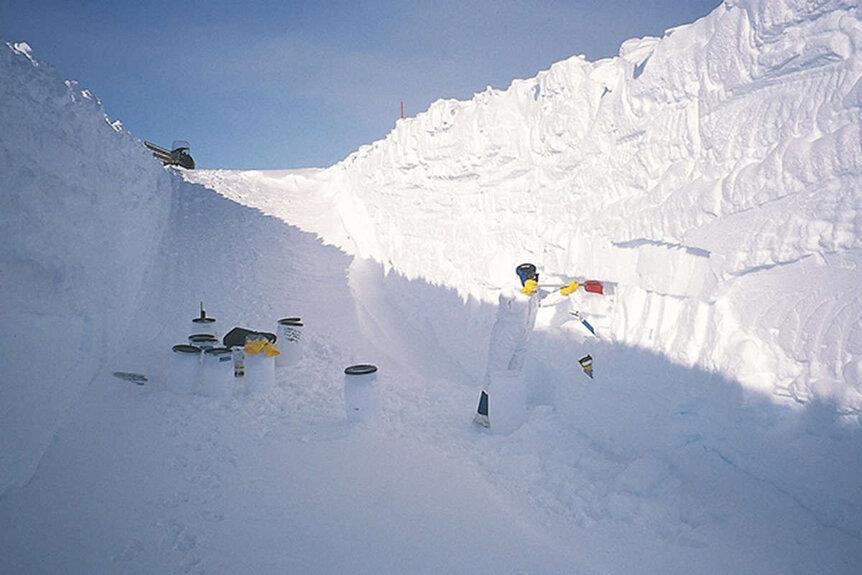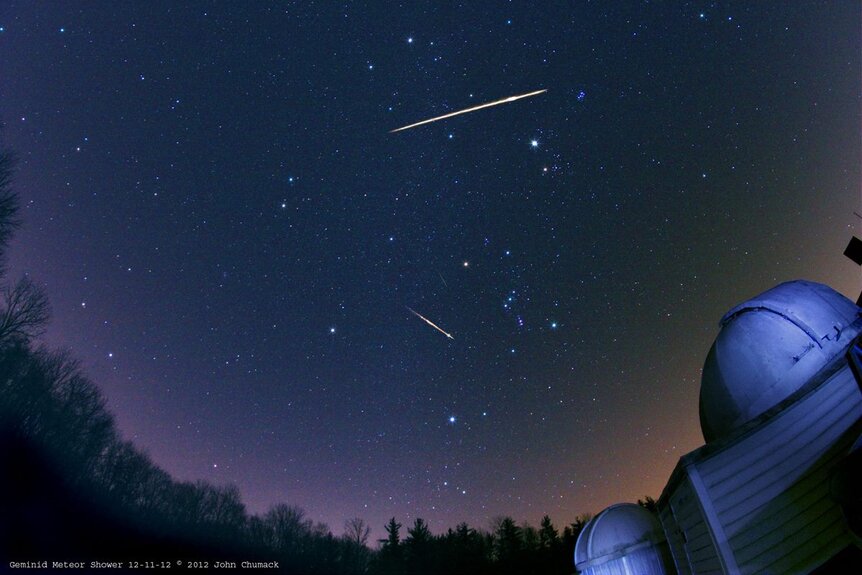Create a free profile to get unlimited access to exclusive videos, sweepstakes, and more!
Is it dusty in here or is it just the 14 tons of meteorite dust that settles to Earth every day?

How much dust from comets and asteroids do you think finds its way to our fair planet and falls to the ground every year?
Go ahead, guess. A ton? Ten tons?
New research looking at micrometeorites — literally microscopic bits of meteorites, particles of rocks and metals from space that fall to Earth — shows that about 5,200 tons of this cosmic debris settles onto the ground every year. 5.2 million kilos per annum, or about 14 tons per day. At least. That's equivalent to the mass of a garbage truck every day.
Oof.
Mind you, this comes with some caveats, but the big picture here is that we're hit by a lot of interplanetary detritus all the time.
Also, this is very wee stuff, smaller than a millimeter in size and some smaller than the width of a human hair. There's no reason to panic*. It slows from interplanetary speeds to basically 0 way up in the atmosphere and then drifts down to the ground. It's no danger, and in fact is quite welcome, since it tells us a lot about what's going on in space.
You might think that the majority of this material that makes it down to the ground would be in the form of decent-sized meteorites, ones a centimeter or more across. However, it turns out the stuff on the ground is actually dominated by particles smaller than a millimeter. In this case, numbers count: There are just so many more small particles than big ones that they make up the majority of the mass that gets to the ground.
The obvious way to do this study is to collect a sample of micrometeorites on the ground and count them. Of course, nothing is ever that simple. The number you'll find is small, so you need to make sure you're looking at a lot of area. You don't want weather to interfere (like rain washing material from one place to another, artificially increasing or decreasing the number you find). You don't want to be near human activity for the same reason. And it would help if you could easily sample the ground over a long but known timespan so that you collect as many samples as possible and calculate a rate.
There's one place that fits all those criteria: Antarctica. Moreover, the Dome-C area where the Concordia Research Station is located. This is about 1,700 kilometers away from the South Pole, at an elevation of 3,200 meters above sea level. It's nearly ideal: It doesn't have much wind, so the snow is laid down evenly, and the rate is well measured — about 2.7 grams of snow fall onto each square centimeter there per year (a depth of a few cm/year).
Over a period of years scientists used carefully cleaned equipment to dig several trenches, each more than 2 meters deep, to make sure they got to snow that fell before humans built the station in 1995, and dug them several hundred meters up wind of the facility. They extracted the snow from depths ranging from 3 to over 8 meters, representing a time range of snow that fell from 1920 to 1980.
The snow was melted and the water filtered to extract solids down to a size of about 30 microns (0.03 mm, a little smaller than the width of a human hair).
The micrometeorites they found are in two broad classes: unmelted micrometeorites, and cosmic spherules. The former are irregular-shaped bits which survived atmospheric entry unaltered, while the spherules are from bits that were heated by their hypersonic passage through our air and formed teeny little balls.
In total, they found 1,280 unmelted micrometeorites and 808 cosmic spherules ranging in size from 30 to 350 microns. Measuring the masses and sizes and using the dates and amounts of snow they were found in, they find that the rate at which these things fall to the ground is about 3 and 5.6 micrograms per square meter per year. So, not much.
But when you multiply by the very large area of the Earth (and extrapolating to a slightly higher size range of 12 – 700 microns) they get their number of 5,200 tons per year, or 14 tons per day.
I have to admit, when I read that I was surprised. The number I usually see batted around about this material is that we're hit by about 100 tons per day! Is one of these wrong?
Actually, they're compatible. I had a suspicion about it, but to make sure I contacted one of the authors, Jean Duprat, and he kindly told me how this works (and confirmed my suspicion). Most of the material that enters our atmosphere (called meteoroids) is small, smaller than a grain of sand. A lot of that material ablates off the meteoroid (heats up and is blown off by the rapid passage through air), creating "smoke" particles that are even smaller than 30 microns. This material tends to stay in the upper atmosphere, creating a layer of meteoroid dust 90 – 100 km above the ground. Even if it falls to the ground, it wouldn't have been counted in this survey because the particles are too small.
So the total amount of material hitting us per year is much higher. Interestingly, on average, the amount of larger meteoritic material — what you normally think of as meteorites — that hits us is much lower, only about 10 tons per year. Bigger stuff is much more rare.
The scientists were able to get an idea of where this material came from by looking at its composition and they find that about 80% of it comes from comets and the rest from asteroids. That jibes decently with what we know of dust in the inner solar system, though some questions remain.
The next time you're out on a dark, clear, moonless night, you may be lucky enough to see a bright meteor streak across the sky. If you do, think for a moment about its fate. Most will wind up being a part of our atmosphere, and some small portion will eventually make its way down to you... and now we have a better idea of how much of it does.
*Well, given the past year or two I can think of lots of reasons to panic, but as it happens not from astronomical sources.





























